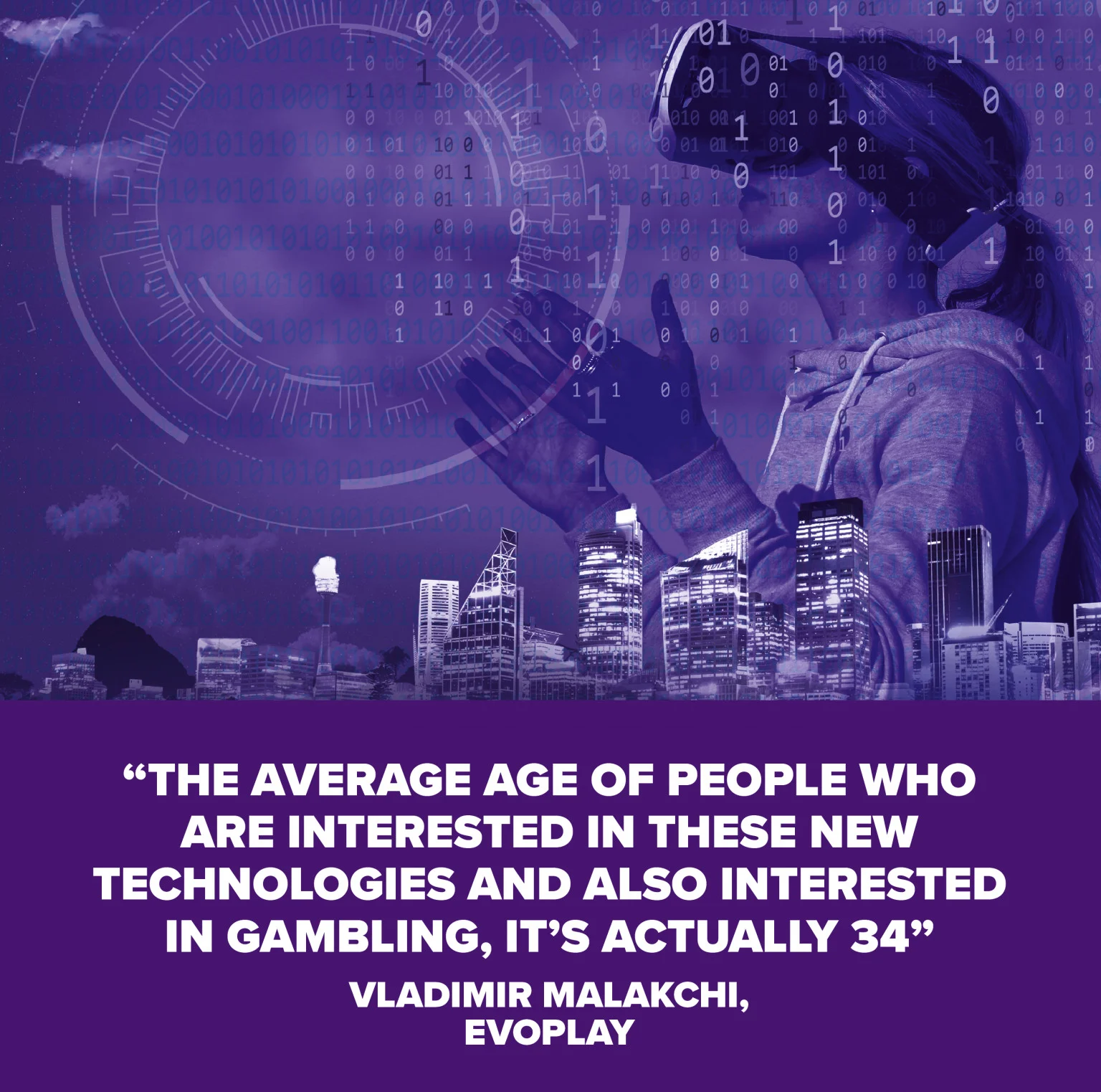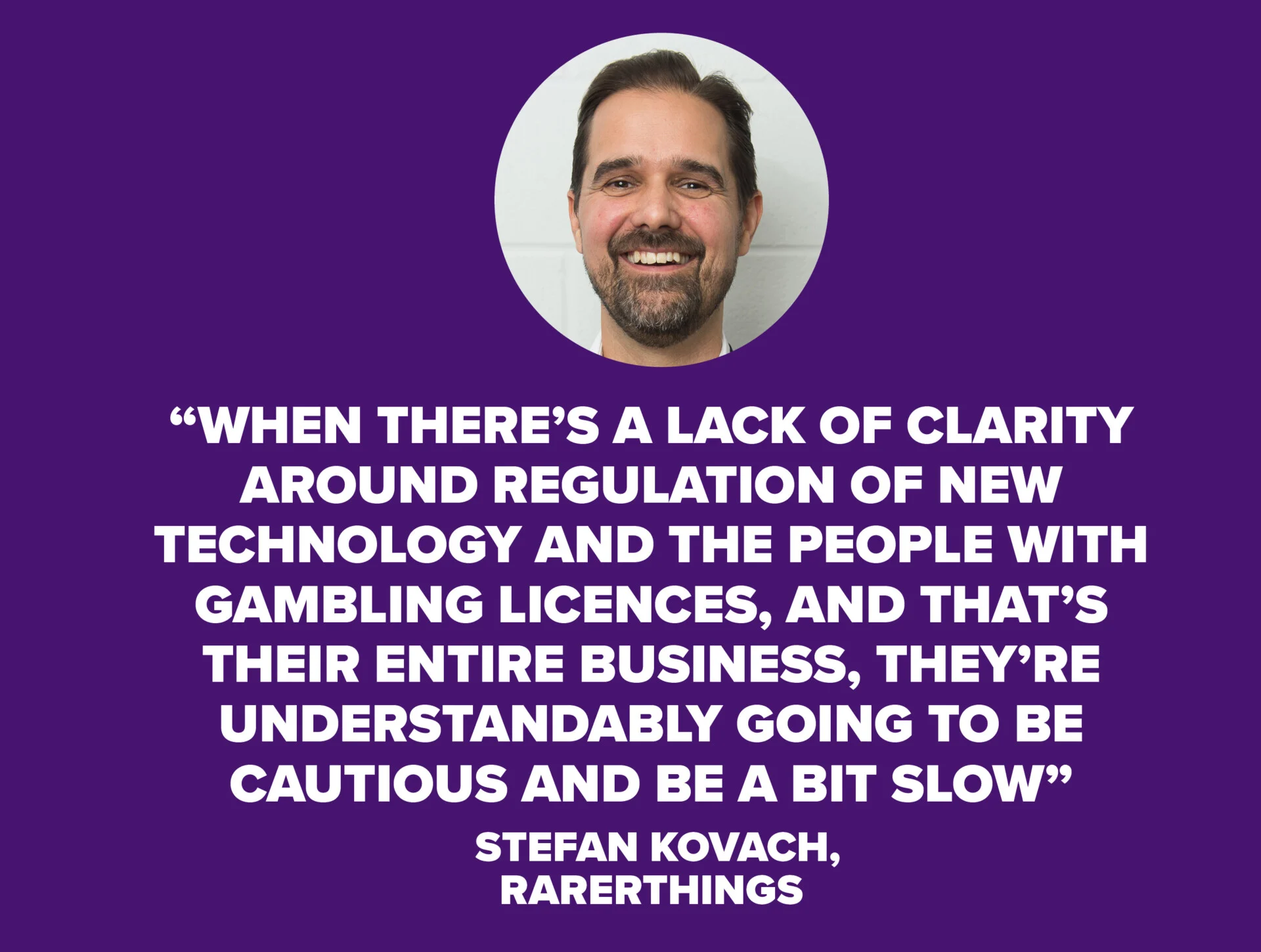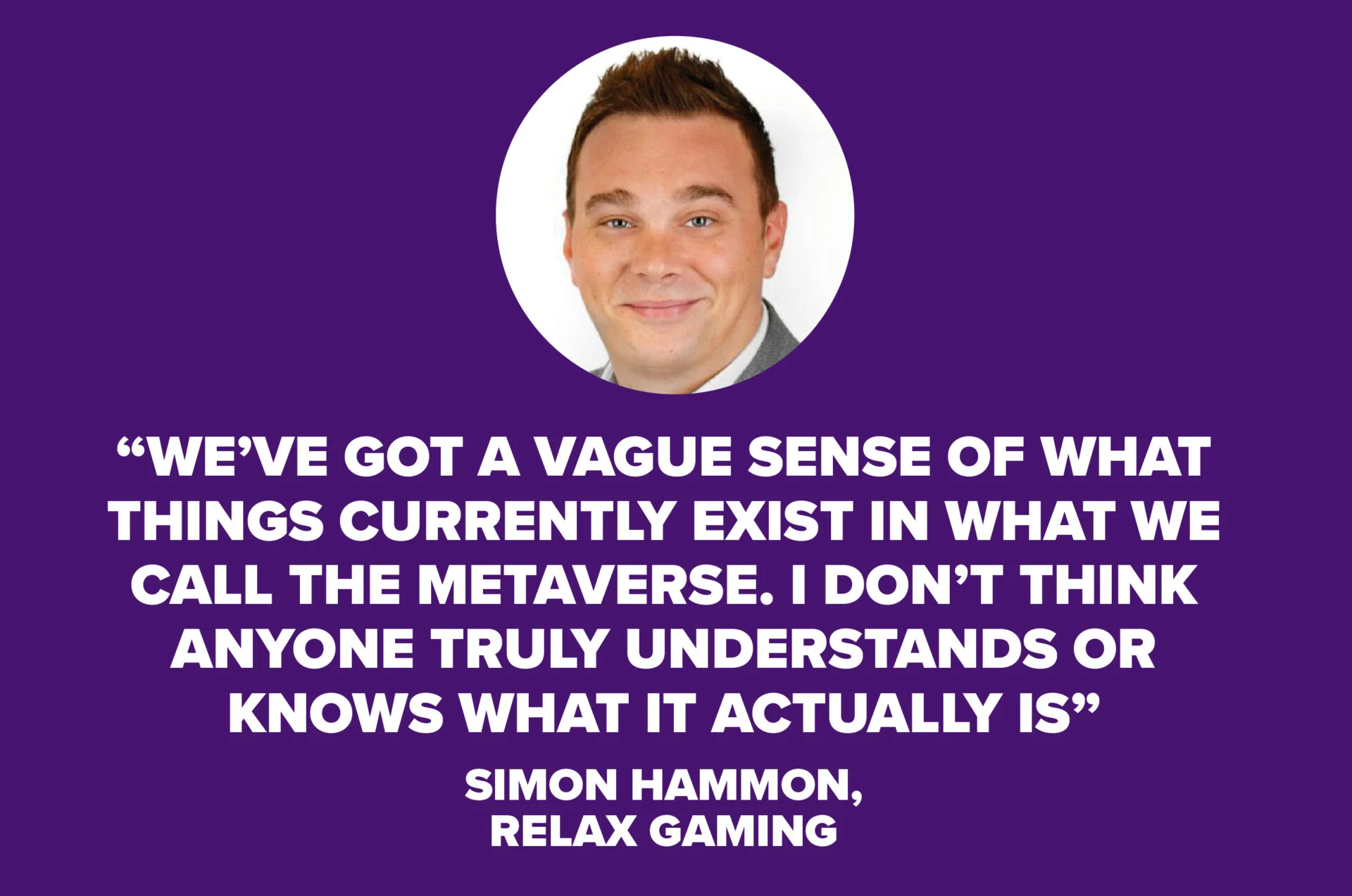The metaverse has quickly established itself as a key talking point as the gambling industry looks to the future. Yet descriptions of this potentially game-changing technology remain vague and real metaverse gambling products are still rare. Is it the future of gambling, Daniel O’Boyle asks, or is it all hype?
Thirty years ago, the author Neal Stephenson published Snow Crash, a sci-fi novel with obvious biblical allusions about a pizza delivery driver for the mafia named Hiro Protagonist who discovers a “linguistic virus”.
Naturally, in 2021, the book would inspire a name change at a $500bn company.
The book contained the first known use of the word “metaverse”, a term that quickly gained influence within the tech sector, with the developers of Second Life among those getting on board.
But to most, the word didn’t mean much until Mark Zuckerberg announced last year that his business would change its name from Facebook to Meta.
“From now on, we’re going to be metaverse-first,” he declared.
That quickly spawned a wave of searches for the metaverse and greater consumer interest than ever before.
“After Facebook renamed to Meta, I think hundreds or even thousands of different metaverses were created and the prices in them shot up,” Evoplay chief commercial officer Vladimir Malakchi says. “I think you can buy a flat in the metaverse for the same price as you can buy a real one.”
Next big thing?
Since that moment, the metaverse became one of the hot topics in the future of gambling.
Entain has been perhaps the most notable adopter. Earlier this year the global betting and gaming giant announced the launch of a new “global innovation hub”, which will invest £100m in “disruptive technologies” including those for the metaverse.
The World Poker Tour, meanwhile, claimed it had taken “the poker world’s first step into the exciting metaverse” when it launched an NFT poker club.
“It’s become a very hot topic,” Beter CEO Gal Ehrlich says. But gambling is just one of many sectors figuring out how to dip its toe into the metaverse. Estimates of its value have been sky-high, with Bloomberg Intelligence analysts arguing it could reach $800bn by 2024. Morgan Stanley analyst Brian Nowak went a step further, claiming that its value could peak at $8tn.
And yet if you asked one of the executives championing the technology what it actually is, it’s unlikely you’d get an answer in less than 100 words. If you asked two people, there’s a good chance they’d disagree.
“We’ve got a vague sense of what things currently exist in what we call the metaverse,” Relax Gaming chief product officer Simon Hammon says. “I don’t think anyone truly understands or knows what it actually is.”
Interoperability
A common theme of every definition is that the metaverse is some form of digital world, but as Funfair Technologies chief operating officer Lloyd Purser points out, digital worlds have been around for a long time: many of the world’s most popular video games are set in one.
“Go to Google and type ‘what is the metaverse’ and you’ll get a broad definition, which says ‘a space where humans can participate in a shared virtual universe’,” he says. “So Fortnite is a metaverse. World of Warcraft is a metaverse. The metaverse is not new. Have you ever played an MMO? That’s a metaverse.”

So what exactly is new? Did Mark Zuckerberg stamp a word from a sci-fi novel on a feature of video games beloved by children and begin an $8tn investment frenzy? Well, not exactly. While there might be previous virtual worlds, Rarerthings founder Stefan Kovach says that the current metaverse has one key feature that makes it different.
“In my mind, there are very much Web 2.0 metaverses such as Fortnite and Roblox, our 3D immersive environments that people generally play in and socialise in,” he says.
“The shift that’s taking place is one whereby those metaverses will increasingly be built on Web3, on blockchain technology.”
What that means, he explains, is that players are able to demonstrably own certain items within their virtual world, typically through non-fungible tokens (NFTs).
“The reason behind that is predominantly around ownership,” he says. “It’s enabling ownership of the land, of items in the game. Merchandise, stuff that you buy within the metaverse, all manner of things that you can imagine in the real world, in theory can be created and sold and interacted with in a metaverse environment.
“And that actually creates a very different dynamic, which enables these economies to be created, which are decentralised and controlled by the community.”

But ownership still exists in Web 2.0 digital worlds – video games such as Fortnite have skins, weapons and items that players can own. What’s new is the type of ownership.
“If you look at esports gaming right now, it still doesn’t act as a metaverse, because there’s no strong financial incentive to drive that level of connection,” Ehrlich says. “That financial incentive can be reached once third-party entities allow different games to talk to one another.”
Whereas item ownership in Web 2.0 is typically registered on one company’s servers, ownership of non-fungible tokens is recorded on the blockchain. As a result, you can own items across a range of games.
“There’s a word in the blockchain world – interoperability,” Purser explains. “Let’s take this fashion NFT exchange as an example. So Gucci create a limited edition run of T-shirts and they’re for sale on that fashion exchange. And then you want to have an avatar in The Sandbox. You have an avatar in Decentraland and you have another, you have avatars in other metaverses.
“You can then basically wear that limited edition Gucci digital clothing in any metaverse, because it has interoperability across metaverses. That doesn’t happen in a centralised world because your items in general and your currency is limited to that particular game or metaverse.”
Tokens in the metaverse can be more than just aesthetic, though. Purser also mentions how certain tokens can give players ownership of aspects of the game itself.
“If you hold these governance tokens, you can vote on the future of what happens with the product. What happens with the economy, what happens with the loyalty, all of these things.”
An immersive experience
But what does that mean for the gambling industry?
Most obviously, it seems like a way to bring a level of immersion that would usually be associated with video games to gambling products.
JNS Gaming’s LynxBet brand is one of the few gambling operators that is already building something for the metaverse. Chief executive Jeremy Taylor says that while this is more of a landing area for now, it’s a chance to stand out from existing operators whose websites largely look similar.
“We’ve started to create our own small metaverse world effectively, in which customers can come and play these different products,” Taylor says. “Quite frankly, if you go to most online gambling websites, these days it’s the same games, with the same housing, just with different colours and a different name.
“We didn’t want to do that; we wanted to build our own frontend to tap into this opportunity to offer the right differentiated customer experience.”
Meanwhile, Malakchi has spent much of his career attempting to bridge the gap between gambling and video gaming with products such as a first-person shooter inspired slot, and he sees the metaverse as the perfect environment to facilitate that work.
That immersive environment, he says, may combine the experience of the most exclusive land-based resorts with the convenience of online gambling.
“I know a lot of gamblers are dreaming of coming to Las Vegas to spend their time there, to [enjoy] these kinds of entertainment,” he says. “I haven’t been to Las Vegas myself, but what I perceived when speaking with different people who are in Macau and Las Vegas, they said that they are [experiencing] another kind of emotion.
“And the metaverse will give an option to different people, who I don’t know, have no resources or no time, doesn’t matter what, but they can’t come to Las Vegas or to Macau or other big casinos, to feel that inside.”

Simon Hammon is a bit more sceptical. If you had the ability to visit not just anywhere in the world, he wonders, but also take in experiences not possible in real life, would you choose a Las Vegas casino floor?
“Without doubt the traditional and current sense of casinos will need to adapt,” he says. “It could be a super exciting time but a lot of questions will need to be looked at in terms of actual casino content and its attractiveness.
“Will players in 10-15 years want to play a traditional slot in current form when it will compete with a much more interactive entertainment space? That’s unlikely, so the industry will need to evolve.”
The NFT effect
The other way the metaverse may change gambling is in the potential offered by certain types of NFT. Where normally a casino’s most loyal customers lose the most money, the metaverse may offer a chance to reward this loyalty through play-to-earn gaming.
“It can give you the ability to walk into different casinos and be recognised as a VIP and also to, in effect, earn a bit of the house edge by holding one of these NFTs,” Kovach says.
However, he notes, any promise of a casino where everyone always wins is probably too good to be true.
“There are play-to-earn models out there, frankly, which are Ponzi schemes,” he says. “But for the sustainable models […] it’s kind of a nice extra, rather than playing purely to earn. It’s a grind to play that way.”
But while he says questions will be asked about the attractiveness of casino content, Hammon doesn’t think the metaverse will represent the end of gambling altogether. Instead, he explains, the gambling products that succeed in the metaverse may differ significantly from the ones we know today.
“Just having a virtual experience of going in and spinning a slot wheel virtually will not be enough,” he says. “The whole gameplay, the mechanic, the player behaviour, I think will need to dramatically shift and to what I’m not sure. But without a doubt, it will need to change.”
However, Ehrlich thinks it’s unlikely that the fundamental underlying mechanics that have made existing games like slots so popular would have to be overhauled. Instead, he says, the changes will be in how the player engages with the game.
“The mathematical model behind the slot will probably remain the same, because they are very much built to create the right level of excitement and engagement for different player demographics,” he says. “But the thing that can be redeveloped is the whole user experience.
“From a flat, 2D screen display, you can create a very sophisticated 3D world, that’s one element, and the second is the social element. The ability to interact with different players in the same menu, to hold and trade digital assets, there are a lot of new opportunities that come from the metaverse that slots can build.”
To Andreas Koeberl, CEO of BetGames, operators and suppliers have to keep one key idea in mind when developing products for the metaverse: they should offer something that gives them appeal over non-metaverse equivalents.
“I think everything that puts the social aspect first – for example a virtual sports bar that you create specifically targeted to your community and with which you engage closely – is essential,” he says. “You always have to think about what’s the value of the metaverse, what makes it more valuable than the traditional mobile world?
“You have to ask: why should I spend my time there? Why should I stick around? It’s potentially simple to acquire and convert users, but retaining them is tricky.”
Entering the mainstream
That question of attracting and retaining users is likely to be key to the future of the metaverse. Social products tend to benefit from network effects, where they become more attractive to users if their friends also take part, so the question of whether metaverse gambling will succeed is heavily linked to the question of if it can reach a critical mass of users.

For Koeberl, who wrote his PhD dissertation on disruptive technologies, that depends on two factors.
“The academic concept here is the perceived ease of use, which tells you how possible it is to access and use this new technology,” he says. “The other aspect is the perceived usefulness, which tells you how much value the new thing actually creates. This refers back to what I was saying earlier, about products that can work in the metaverse. If I can do something already, what’s the value [of doing it in the metaverse]?
“So you have the perceived ease of use and perceived usefulness. If one of these is poor, the new technology won’t emerge into the mainstream.”
And that’s a major reason why Hammon is more sceptical of the metaverse than most. “If you actually look at the gaming business as a whole, it’s not driving the cutting edge of technology,” he says.
“Ultimately, we need to cater for needs that rely on mass adoption and to be economically prudent. As an industry, mass adoption will dictate technology and platform development.”
If the industry is waiting for new technology to gain mass appeal, then it may need that new technology to improve to the point where it’s more palatable to a wider range of people. In particular, Ehrlich notes, there may still be work needed to create the augmented reality or virtual reality technology that could support a 3D metaverse.
“There have been companies exhibiting 3D slots at ICE for years and the only thing I remember about that is getting a headache after a few minutes,” Ehrlich says. “There are new items that when you use these you feel things are going in the right direction, but it’s still not there.”
Koeberl’s experience with immersive technology hasn’t been any better.
“I think the technology is a super enabling platform for the future but it’s simply not ready,” he says. “I need huge goggles, with five hours’ battery time, that may hurt my eyes or give me a headache.”
As metaverse businesses try to attract enough customers to make the product viable, who will be the early adopters? Given that the metaverse is a novel piece of technology that resembles video games popular with young people, the obvious answer would be young people.
However, Malakchi says that Evoplay’s data painted a more surprising picture.
When we started doing some analysis, we were sure that our early adopters would be people from 18 up to 22, 23 years old,” he says. “And this was a very big mistake from our side because when we studied it, we found the main early adopters are older than 30.
“The average age of people who are interested in these new technologies and also interested in gambling, it’s actually 34.”
Regulatory challenges
Beyond appealing to customers, though, there’s the question of regulation.
“The US is only just regulating online gambling,” Purser notes. “How the hell are they going to start regulating the metaverse?”
Kovach notes that regulatory uncertainty is why many gambling businesses have not taken serious steps to build something in the metaverse.

“When there’s a lack of clarity around regulation of new technology and the people with gambling licences, and that’s their entire business, they’re understandably going to be cautious and be a bit slow,” he says.
Much of that concern deals with fears of regulators smothering metaverse gambling in tight rules that make it effectively unworkable. But Taylor notes that an entirely unregulated metaverse space could lead to serious harm.
“If there isn’t the same scrutiny in the metaverse as there is outside of it, then it’s really dangerous, to be honest,” he says. “Ultimately everyone will lose if the customers get harmed.
“If the protections to safeguard them aren’t in place, it’s just going to create a really bad name for these worlds and online gambling in particular.”
He also notes that while some regulators may be slow to adapt, the Isle of Man authorities – which licensed LynxBet – have been “forward-thinking” when it comes to new technologies, albeit “with a lot of controls and policies in place that you need to comply with before you get your licence”.
But to Ehrlich, the question of what will and won’t be permitted when it comes to the metaverse is much more philosophical than regulatory.
“I look at this from two different dimensions; the first is regulatory authorities, the governments, and also us as a society, as in what we will accept and what we won’t,” he says.
“From a social point of view, it could swing between a black and a white market. If it’s not properly governed and monitored, it could become a real wild west, and ultimately find itself coming to a very disappointing end. The operators behind the metaverse, the big players behind it, are already very sensitive to the social implications of not doing it properly.”
While there are plenty of metaverse champions in gaming, Koeberl is adopting a “wait and see” approach for now. After the initial wave of interest following Facebook’s name change, search interest in the metaverse has drastically cooled off and the real game-changing products may still be years away.
“For the metaverse, I currently see user experience and value as key blockers,” he says. “Technological readiness is pretty low, and of course from a market readiness level, just think of the challenges around KYC, AML and even IP and player protection.”
Hammon has similarly mixed feelings on the subject. He notes that, at least for now, he’d find it hard to imagine a metaverse gaming opportunity that would make him feel a need to get on board.
“Platforms like Facebook have laid out what their vision is, but there are plenty of questions about how it’ll be achieved,” he says. “If a gaming company today presented a similar vision, there’d still be as many unknowns.”
So for now, as metaverse gambling businesses hope to convert sceptics, the crucial step that will determine if the product can reach critical mass may come from somewhere outside of the gambling industry.



